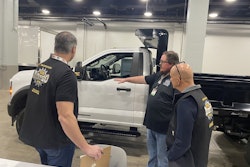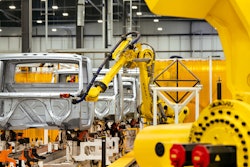Everyone has their fingers crossed hoping the market bounces back soon. Sales are off by an average of 15 percent, and some regions where housing construction has been hardest hit are doing even worse.
But let’s just hope we don’t end up regretting what we wish for. We need things to improve, but we need them to get better gradually rather than like gangbusters.
If the demand for parts and service comes back suddenly, the industry likely will find itself in a situation where demand will far exceed supply for needed parts.
All of those neglected vehicles that have had repairs and maintenance delayed will need TLC.
When freight comes back, parked vehicles will need to be made road ready again. The idle trucks that have been cannibalized for parts to keep other vehicles in operation will need to be restored. And, if fleets find the need for capacity so great that they need to add units, truck manufacturing will ramp up again, further straining the supply chain.
It will create a perfect storm with all channels clamoring to get components. But there likely will not be enough to go around.
Like companies in most every industry, truck parts manufacturers have been forced to idle plants and reduce workforces. Some will be better positioned than others to handle a sudden surge in demand, but it’s a safe bet no one is ideally situated to deal with a rapid ramp up.
Most distributors and service providers have had to make similar sacrifices, cutting technicians, salespeople and other personnel. Distributor inventories are very low right now, deep and wide enough to handle only the most immediate and predictable sales.
In general, the aftermarket is not well positioned if there’s a dramatic increase in demand.
During an interview with Chuck Marrale, president of One On One Sales Development, Inc., last month on best practices for sales, he commented that outside salespeople need to be looking ahead at what customer demand will be, rather than asking for orders that just aren’t there right now.
It makes a lot of sense and it could mean the difference between feast and famine when customer demand spikes.
Outside salespeople need to be out asking the right questions. Customers may not be buying now, but eventually they will. Ask them about the trucks they have idle, the ones that were parked because they needed service or repairs and it was cheaper and easier to just put them out back. Ask them which trucks have been poached for parts and what those vehicles will need to become operational again.
Run through this scenario with customers: If you suddenly needed the capacity you had before the downturn, what kind of a position would you be in? Would you be able to meet the freight demand of your customers? What parts and components are you going to need to get your full fleet operational again? Which vehicles are in dire need of service?
This predictive selling will put you ahead of the rest when things improve. Obviously you don’t want to get too far ahead of the game and overexpose yourself by stocking too much product. But you probably won’t regret building inventory back up incrementally so you can serve customers when they need you.
Let’s hope the market comes back somewhat gradually, at a pace where supply and demand are on somewhat equal footing. It isn’t likely, but there’s no harm in hoping.
In the meantime, gather all of the intelligence you can from customers and start making forecasts and decisions that will best position you to meet their needs.






